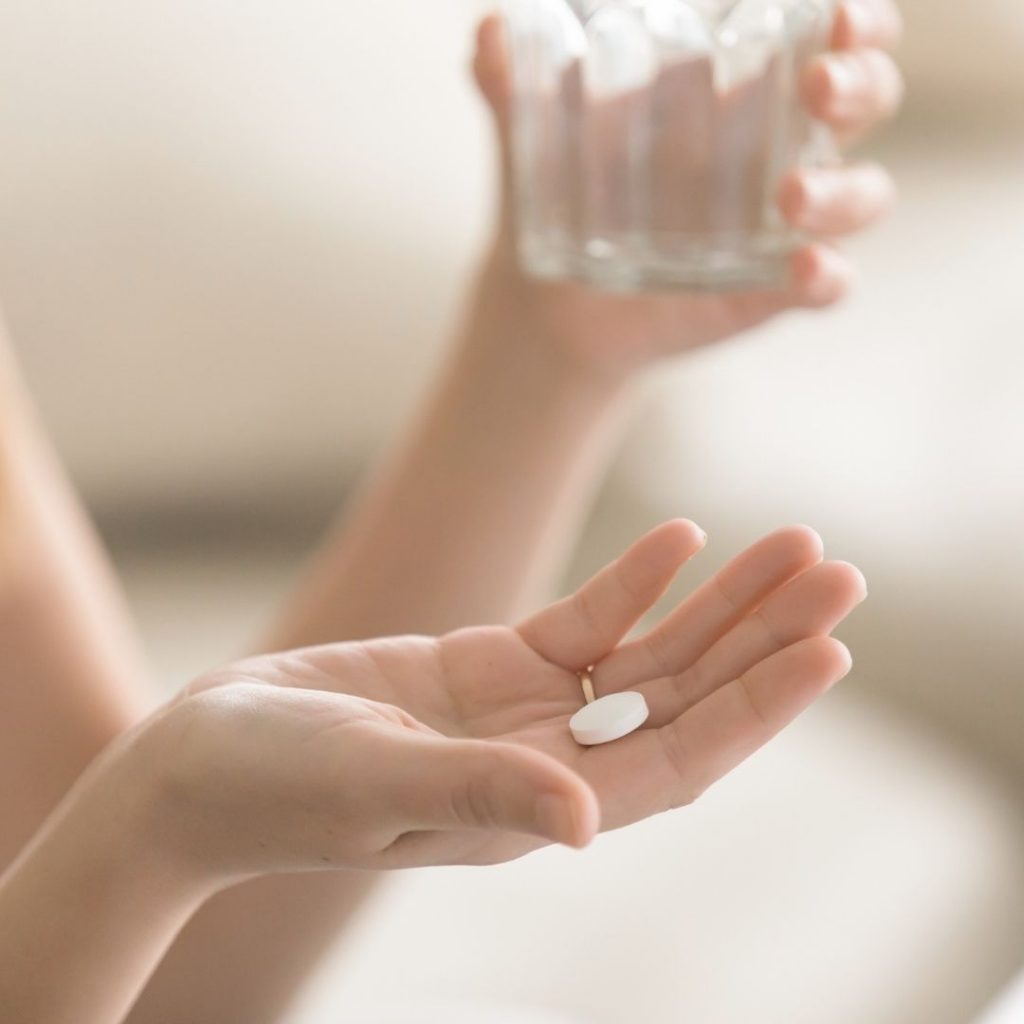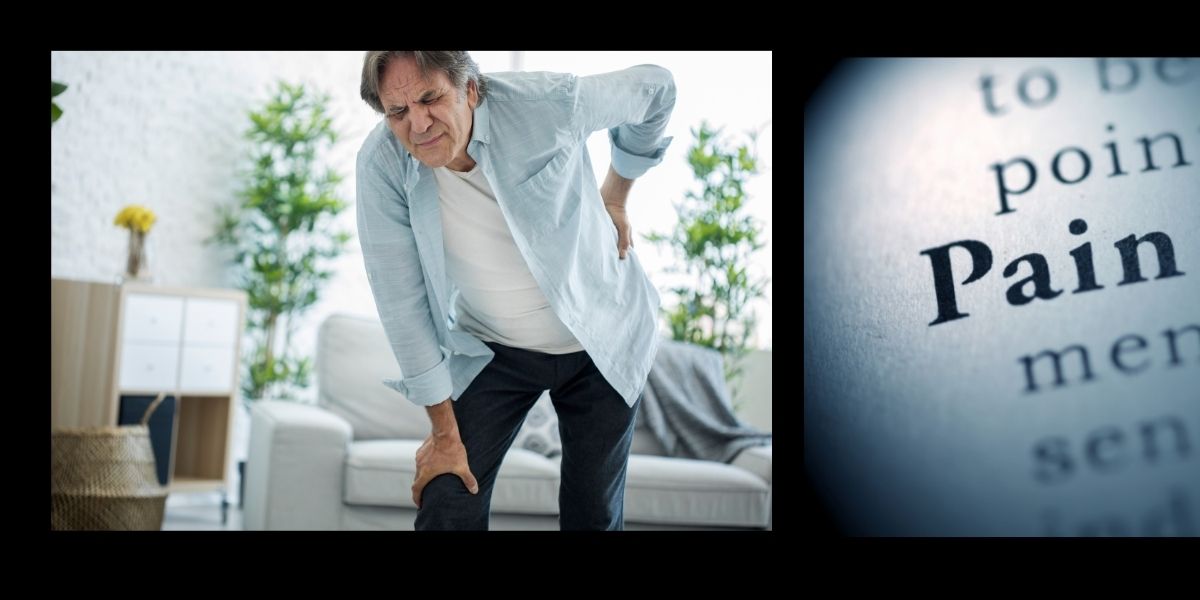Pain killer: that Hip & Knee Pain has been hurting you, you know that having a painkiller makes it go away. But you have been doing this for the past 2 days and the pain still keeps coming back. The pain just doesn’t go away!
Pain Killers and Analgesics are only part of the part of the solution to treating pain.
Pain needs to be understood before you treat it!
You should know that the “feeling of Pain” is caused by an injured tissue or an inflamed tissue in your body.
If you want the pain to go away you have to first reduce the inflammation.
Lets Try and Understand How Pain Killers Work

Analgesics is the medical name for painkillers and they typically work by inhibiting the production of a specific type of Lipid called “Prostaglandin” which are produced at the site of tissue damage and infection. These lipids promote “Inflammation” that is necessary for healing, but also results in “Pain”, “Fever” & “blood Clotting” – These are your body’s responses.
So your doctor typically prescribes 3 types of Painkillers depending on your condition:
Non-Steroidal Anti-Inflammatory Drugs (NSAIDS) like Aspirin, Dispirin, Voveran, Ibuprofen, Diclonofenac, Etoricoxib. These are for relieving pain, reducing inflammation and bringing down temperature. Basically, these meds slow down the production of Prostaglandins in the body.
Paracetamol – Simply treats pain and lowers high temperature. However, it does not help with inflammation.
Opioids – Often used to treat severe pain; Opioids work by binding to certain receptors in your central nervous system, your gut and other parts of your body. This leads to a decrease in the way you feel pain and your reaction to pain, and it increases your tolerance for pain.
Each works in a different way. Most people only need to take painkillers for a few days or weeks at most, but some people need to take them for a long time
If you’ve taken opioid medications for more than two weeks, you may need to stop using these medications as soon as possible to prevent serious consequences.
Don’t try to taper of these on your own. Opioid withdrawal can be dangerous, and symptoms can be severe. When it’s time for you to stop taking opioids, ask for your doctor’s help to develop a medication withdrawal plan (called a taper) that gradually reduces the amount of medication you take. Depending on the type and dose of the drug you’ve been taking and how long you’ve been taking the drug, it may take weeks or even months to gradually and safely reduce your dose and get off your opioid medication.
Stopping opioids can be difficult, but you can do it. You’re much more likely to succeed if you partner with your doctor and your health care team, plan your taper schedule, manage your symptoms, and learn alternative ways to cope with pain.
Get Rid of that Back Pain & Neck Stiffness with these Spine Rotations
Click the Link to read More
Now That We Know How To Treat Pain – Lets Explore Some Super Foods That Are Traditional Alternatives
You can follow our Youtube Channel for similar content in the future.
Lose that Weight
Many health conditions are worsened by excess weight, and the stress of extra weight on joints can lead to painful conditions, particularly of the knees and feet. It makes sense, then, that losing weight often helps to relieve some kinds of pain.
25 – 35 g Fiber in your daily Diet

Eating a high-fiber diet that includes plenty of nutrient-rich fruits, vegetables, beans, nuts and whole grains can yield many rewards.
It might also help lower markers of inflammation like CRP that’s been linked to diseases like rheumatoid arthritis (RA), heart disease and diabetes.
Guidelines recommend 20 to 35 grams per day, including both soluble and insoluble fiber. At each meal, fill at least one quarter of your plate with whole grains. Another half of your plate should be devoted to fruits and vegetables.
If you’ve been lax about fiber in the past, increase it gradually in your diet. Going straight from 0 to 35 grams a day could lead to uncomfortable symptoms like gas and bloating. And don’t forget to drink plenty of water with your fiber. Water helps fiber work more effectively in your body.
| One Apple/ Pear/ Banana | 3 g Each |
| 1 Cup/ 30 Grams Oats, Whole Wheat Flour, Jowar Bajra, Red & Black Kidney Beans, Chick Peas | 6 g Each |
| 100 g Raw Carrots, Beetroot, Brocolli | 4 g each |
Add Phytochemicals and Antioxidants to your Meals

Overproduction of oxidants or free radicals in the human body is responsible for development of many diseases within the human body
“Antioxidant” is a general term for any compound that can counteract these unstable molecules or free radicals that damage DNA, cell membranes, and other parts of cells
Some vitamins and minerals — including vitamins C and E and the minerals copper, zinc, and selenium — serve as antioxidants, in addition to other vital roles.
Antioxidant phytochemicals can be found in many foods and medicinal plants, and play an important role in the prevention and treatment of chronic diseases caused by oxidative stress. They often possess strong antioxidant and free radical scavenging abilities, as well as anti-inflammatory action, which are also the basis of other bioactivities and health benefits, such as anticancer, anti-aging, and protective action for cardiovascular diseases, diabetes, obesity and neurodegenerative diseases.
Look For Bright Fruits & Vegetables – Specifically Red, Yellow, Green, Orange & Purple. Add 5 Servings of these coloured fruits and vegetables everyday
Omega 3 Fats

They work to reduce production of molecules linked to inflammation
Few foods that that can help
100 g of Salmon Fish, Fistful of Walnuts, 1 Table spoon of Roasted grounded flax seeds, 2 Whole Eggs
Nutrition is an important element of health in the older population and can affect the Aging process.
Older adults often have reduced appetite and energy expenditure, which, coupled with a decline in biological and physiological functions such as reduced lean body mass, changes in cytokine and hormonal levels etc need to be carefully managed when dealing with Pain, Inflammation and other Chronic conditions.
Some of Other Posts That Might Interest You

